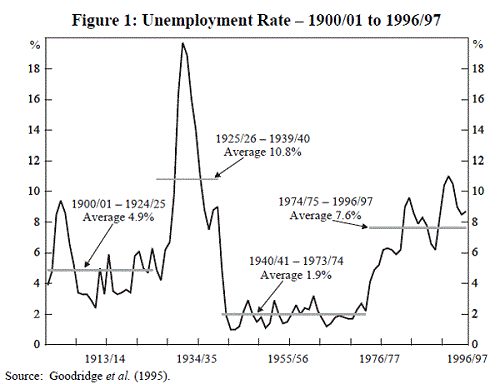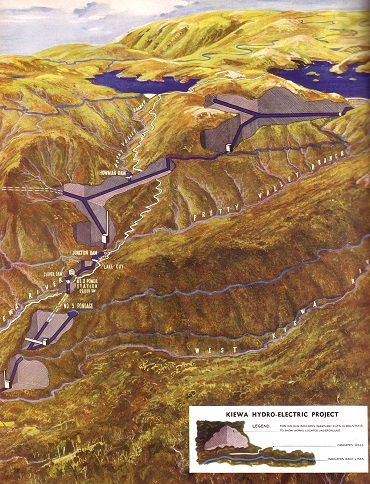A genuine fast-track infrastructure program would create over a million jobs this year alone, in the same nation-building spirit which saw close to full employment in Australia from 1940 to 1974. The infrastructure would fulfil existing needs and reduce bottlenecks suffocating our productivity. But importantly, building for future expansion will be part of any genuine fast-track infrastructure program. This spirit of growth will foster human creativity and happiness. The current system which seeks to suppress demand through price signals must end. This belt-tightening is a recipe for blind rage and despair.
History shows it’s almost impossible to “spend too much” on infrastructure, as the economic activity it generates pays for the initial asset many times over. When Dr John Bradfield designed the Sydney Harbour Bridge the naysayers complained it was far too large and expensive. At 48.8 metres, it was the world’s widest long-span bridge until construction of the new Port Mann Bridge in Vancouver, Canada was completed in 2012. But now it and the Sydney Harbour Tunnel that opened in 1992 are both chockers with traffic.
Australia must build numerous major infrastructure projects concurrently. And “concurrently” is a word Australians should embrace! In 1949 Australia’s population was just 8 million yet not only did we build the Snowy Mountains Scheme, but at the same time Tasmania’s Hydro-Electric Commission (HEC) built numerous world-class dams and hydroelectric power stations. And as a nation we also built just about everything from cars, to fridges and washing machines, which are now imported. From 1940 to 1974 the unemployment rate averaged less than 2 per cent and at times was much lower. This was a time of nation-building and this must return. Australia now has a population of over 25 million, and 3.5 million unemployed or underemployed but otherwise able people.
Energy
Australia’s energy crisis must be solved with nuclear power. Bold leadership could immediately end Australia’s ban on domestic nuclear power production so power station construction can be fast-tracked. A Roy Morgan opinion poll in September 2019 showed that most Australians are now open to nuclear power and more support it than oppose it. In March 2011 following the Fukushima nuclear incident, 61 per cent opposed nuclear power to supply electricity to Australia. This opposition dropped to 40 per cent by September 2019. The case for nuclear power is so strong that nearly all Australians would support it within a few weeks of a well-run education campaign. Bold political leadership in adopting such a program would outflank the tired old anti-nuclear arguments.
A genuine fast-tracked infrastructure program would see several 1,000-megawatt reactors connected to the grid during the 2020s, with at least one station in each State. Concurrently, several smaller modular units would serve remote locations such as Darwin and Alice Springs. Collaboration with China, which has the world’s largest nuclear construction program, would make this possible. China’s most recent nuclear construction start, the 1,000 MWe Taipingling 1 in December 2019, is scheduled to begin operation in August 2024. Australian workers could contribute in the power station construction, but foreign workers and expertise would clearly be necessary. Over time training will be essential to build local expertise.
Transport
Australia with its vast distances cannot ignore highspeed transport any longer. Prof. Lance Endersbee’s The Asian express: a proposed fast freight service to Asia, published in 1994, supported a fast-freight inland rail to open Australia up to the largest emerging markets in Asia. In combination with high-speed shipping from a national port in Darwin, fresh perishable agricultural produce could be sent to Asian ports, something not possible with existing transport options. Prof. Endersbee’s Asian Express from Melbourne to Darwin had links to Sydney, Brisbane, Gladstone and Alice Springs. In 1997 he expanded it to an Australian Ring Rail Proposal to link in Western Australia, all the way to Perth.
The Howard government refused to back Prof. Endersbee’s proposal and instead lent federal backing, and funds, to a privately funded $10 billion rail scheme from Melbourne to Darwin, the Australian Transport and Energy Corridor (ATEC), headed up by former Liberal party fundraiser and Howard friend Everald Compton. The Citizens Party (then CEC) in the April 2006 New Citizen forecast the privately-funded ATEC would never be built in the first place. Tragically, a leadership failure in leaving development to the private sector has seen essentially nothing happen in two decades, while during the same period China has built around 35,000 km of high-speed rail.
Minimally a conventional high-speed Asian Express and Ring Rail should be prioritised over the slow 115 km/h Inland Rail plan from Melbourne to Brisbane. Such a rail corridor should be wide enough to include passenger transport and freight. Australia must also enter the age of magnetically-levitated (maglev) transport and especially vacuum maglev, which effectively eliminates air resistance in an evacuated tube. The Hyperloop proposal is gaining traction overseas in the research and development phase, and once its advantages are realised the technology will revolutionise transport just as steam trains replaced the horse and cart. According to Virgin Hyperloop’s Vice President of Marketing Ryan Kelly, Hyperloop One is expected to be fully operational by 2030 with certification in the next few years. Virgin Hyperloop plans for speeds over 1,000 km/h, but much higher speeds are possible with vacuum maglev technology. So far the company has run hundreds of tests of up to 387 km/h on a 500-metre test track.
In latest news, the Mid-Ohio Regional Planning Commission (MORPC) has just released the 2020 Hyperloop Feasibility Study exploring a Hyperloop connection between Columbus, Chicago, and Pittsburgh, USA. It found that the route would create US$300 billion in overall economic benefits with nearly US$19 billion of that in direct transportation benefits. Over 30 years the Hyperloop route would eliminate 450 million commercial truck vehicle hours travelled.
An Australian government with vision would invest several billion dollars into vacuum maglev technology so we don’t lag the rest of the world as we have in countless other areas.
Water
Australia must build the Clarence River Scheme in northern NSW and the Bradfield Scheme in Queensland concurrently. Both projects would be on the scale of the Snowy Mountains Scheme and provide urgently needed insurance against drought. They would provide flood mitigation and generate electricity. Construction of the Hells Gates dam for the Bradfield Scheme must start immediately and should not be the scaled-down version currently being considered by the Commonwealth Government’s North Queensland Water Infrastructure Authority.
The Clarence River Scheme as envisaged by Prof. Endersbee would see much of the floodwaters in the north of NSW diverted to the Murray-Darling Basin. In addition, plans of WaterNSW revealed under a freedom of information request by the Guardian show other potential water diversions into the Murray-Darling Basin. At least four projects involving pumping water from coastal rivers over the Great Dividing Range to replenish western NSW rivers have been released, much to the horror of the anti-dam activists at the Guardian. They point to possible negative environmental outcomes but fail to see potential positive outcomes of reduced floodwaters flowing to the ocean. For example, in 2016 prawn fishermen reported a bumper crop and put it down to the “very dry weather here on the Clarence”.
The Kiewa Hydroelectric Scheme, the largest hydroelectric scheme in Victoria, could be expanded to fulfil the original plan with five generators. Budget cuts under Prime Minister Robert Menzies scaled back the scheme and stopped the construction of the fifth power station in the West Kiewa Valley. Since the 1990s privatisation, nothing has been done to expand the scheme.
Social infrastructure
Building hospitals and public housing must start now. An urgent program to double the number of hospitals and hospital beds would merely take Australia back to the standard that we had in 1977 with 8.1 beds per thousand population, versus the current 3.8 beds. There are more than 100,000 homeless Australians. In 2018 homelessness in NSW was up 37 per cent since the last census. An emergency public housing program will create many jobs and protect vulnerable Australians affected by the massive increased cost of housing as a result of the property bubble.








